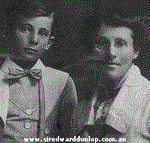 |
| Ernest and his mother Alice |
Sir Ernest Edward 'Weary' Dunlop was born on 12 July, 1907 at Wangaratta, Victoria, Australia, the son of James and Alice Dunlop and younger brother of Alan. Ernest (or Ernie as he was called), lived on a farm at Sheepwash Creek and was exposed to a life of hardworking and extremes from an early age. As a youth, Edward longed for adventure and challenge and would listen attentively to the tales of his great grandfather's exploits in India as well as other family members parts in WW1.
As well as loving to read and having an inquisitive mind, Ernie was of above average intelligence and by 16 years of age he had completed his studies at Benalla High School. He went on to accept an apprenticeship with the local pharmacist, Mr. W. M. McCall Say, as well as entering into a course with the College of Pharmacy in Melbourne. Graduating top of his class and receiving the first H.T. Tompsitt Scholarship Edward began to study medicine at The University of Melbourne, excelling in his studies and also in sport, playing with Australia's national rugby team as well as becoming the University's champion boxer.
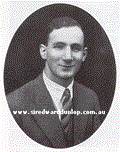 |
| Ernest as an apprentice |
Graduating from Melbourne University in 1934 with his medical degree, he was granted a place at the Royal Australasian College of Surgeons. This began Edward Dunlop's ascent as one of Australia's best known surgeons. Soon after his graduation, Edward Dunlop joined the Coburg/Brunswick Battalion of the Citizen Military Forces and from there he enrolled in the Royal Australian Army Medical Corps where he was commissioned as a Captain and given the nickname 'Weary'.
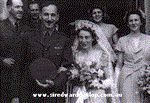 |
| Ernest on his wedding day |
At the outbreak of The Second World War in 1939, he immediately enlisted, saying "I couldn't get into the army quick enough."
In 1942 he was sent to Java, Indonesia to help treat allied and Australian troops who were stationed there in order to counter the Japanese threat. In March of that year the Japanese captured Weary's hospital in Bandoeng, Java. Weary could have escaped but he would not hear of leaving his patients and he became a prisoner of war. These men were used to build a railway between Burma and Siam. Costing one hundred thousand lives this project became known as 'The Railway of Death'
Weary led the first Australian group to arrive in Siam as Commanding Officer and Surgeon he had the care and responsibility for over one thousand men. This group became known as 'Dunlop Force' or 'Dunlop's Thousand'.
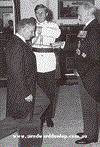 |
| The knighting of Earnest Dunlop |
Waking at 3am to begin their daily trials, breakfast usually consisted of one mug of rice and one of tea. Ernest displayed extraordinary courage in attempting to improve the harsh living and working conditions for his fellow POWs. He was once made to kneel on gravel and hold up some heavy stones for many hours. He wrote "I have a conviction that it's only when you are put at full stretch that you can realise your full potential" Some of 'Weary's Thousand' also wrote about his deeds such as "when despair and death reached us Weary Dunlop stood fast…he was a lighthouse of sanity in a universe of madness and suffering" and "Weary never sat down" Dunlop also saved many peoples lives by standing up to their captors for example the Japanese were to execute a disabled man because he was unable to work but Weary stood between them and said "You will need to put those bayonets through me first" On July 12th 1945, his 38th birthday, he received extraordinary gestures from both sides, an example of the impact he had on those around him.
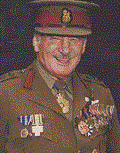 |
| Weary at his last anzac day |
Sir Ernest returned to Australia in 1946 and was married 3 weeks later. In 1969 he was knighted and in 1976 he was honoured as Australian of the Year, even appearing on "This is your life". He became an ambassador for Australia and upon a return to Thailand he was well recognized and revered. On the 2nd of July 1993, Sir Edward Dunlop passed away. A state funeral was held at St. Patrick's Cathedral. An estimated ten thousand people lined the streets of Melbourne for his funeral.
Page created on 10/31/2007 12:00:00 AM
Last edited 10/31/2007 12:00:00 AM
